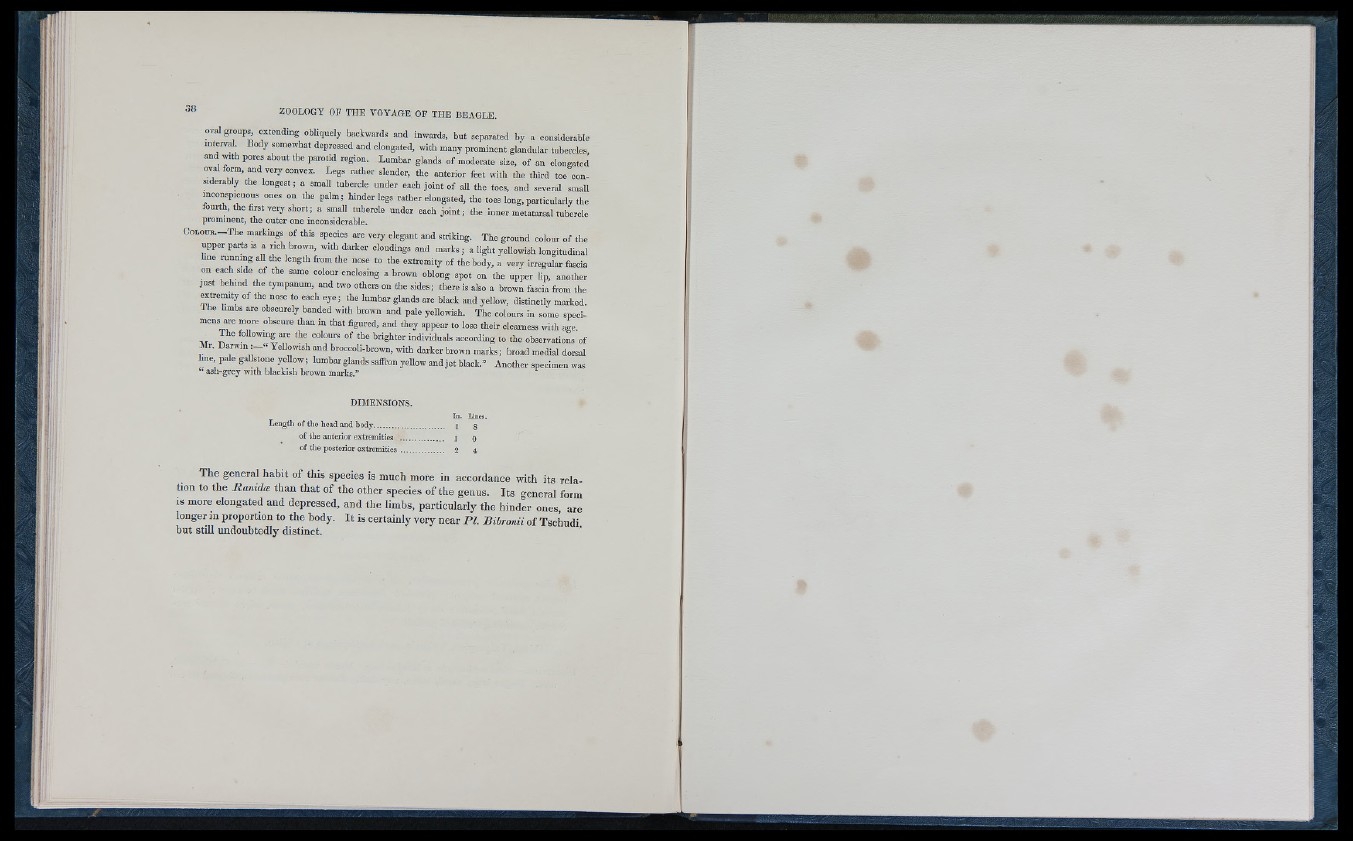
OTal groups, ex te n d in g obliquely backwards an d inwards, b u t sepa rated by a considerable
rn te rv d Body somewhat depressed an d elongated, with m an y p rom in en t g lan d u lar tubercles,
■and with pore s ab o n t th e p a ro tid region. L um b a r glands o f moderate size, o f an elonga ted
oval form, an d very convex. L eg s ra th e r slender, th e a n te rio r fe et with th e th ird toe eon-
s tderably th e lo n g e s t; a small tnberc le u n d e r each jo in t o f all th e toes, a n d several small
mconspieuons ones on th e p a lm ; h in d e r legs ra th e r elongated, th e toes long, partic u la rly th e
fo urth, th e first very s h o rt; a small tuberc le u n d e r ea ch jo in t; th e in n e r metata rsal tubercle
p rominentj th e o u te r one inconsiderable.
C o io n n ._ T h e markings o f this species are very e le g an t an d striking. T h e g ro u n d colour o f th e
u p p e r p a rts is a rich brown, with d a rk e r cloudings an d m a rk s ; a lig h t yellowish longitudina l
Ime rn n n rn g all th e len g th from th e nose to th e e x trem ity o f th e body, a very irre g u la r fascia
on each side o f th e same colour enclosing a brown oblong spot on th e u p p e r lip, an o th e r
ju s t b eh in d th e tympanum, a n d two others on th e s id e s ; th e re is also a brown fascia from the
ex trem ity o f th e nose to each e y e ; th e lum b a r glands are black an d yellow, d is tin c tly marked.
T h e hmbs are obscurely b an d e d with brown a n d pale yellowish. T h e colours in some speci-
mens are more obscure th a n in th a t figured, an d th ey ap p e a r to lose th e ir clearness with age.
T h e following are th e colours o f th e b rig h te r individua ls ac cording to th e observations o f
M r. D a r w m Y e U o w i s h an d broccoU-brown, w ith d a rk e r brown m a rk s; broad medial dorsal
h u e pale gallstone y e llow ; lum b a rg lan d s saffron yeUow an d j e t black.” A n o th e r specimen was
" ash -g rey with blackish brown marks.”
DIMENSIONS.
In. Lines.
Length of the head and body................................... j g
of the anterior extremities i o
of the posterior extremities..................... 2 4
The general habit of this species is much more in accordance with its relation
to the Ranidte than tha t of the other species of the genus. Its general form
IS more elongated and depressed, and the limbs, particularly the hinder ones are
longer m proportion to the body. I t is certainly very n ear PI. Bibronii of Tschudi
but still undoubtedly distinct. ’